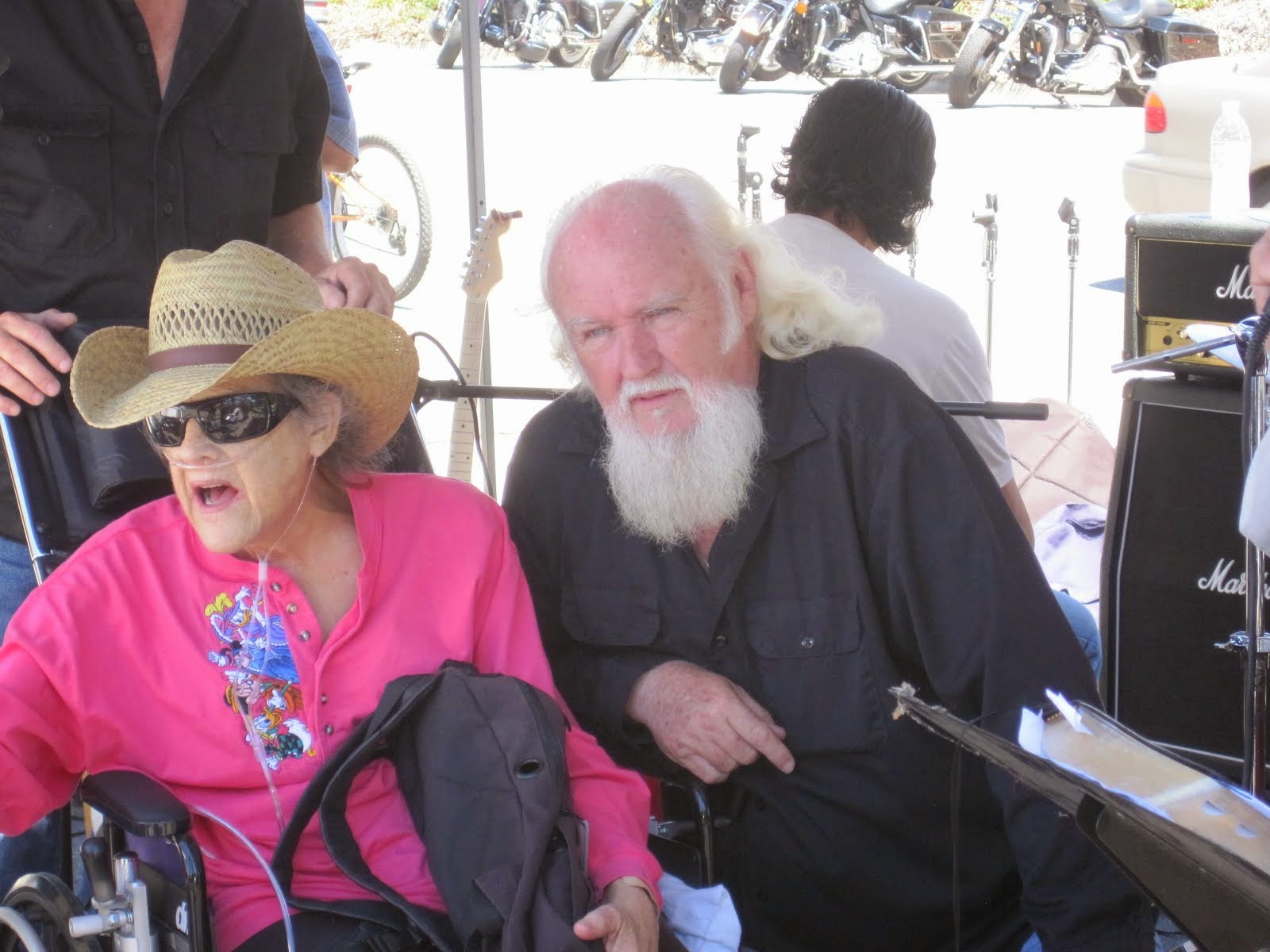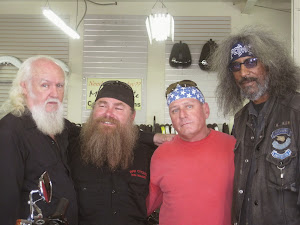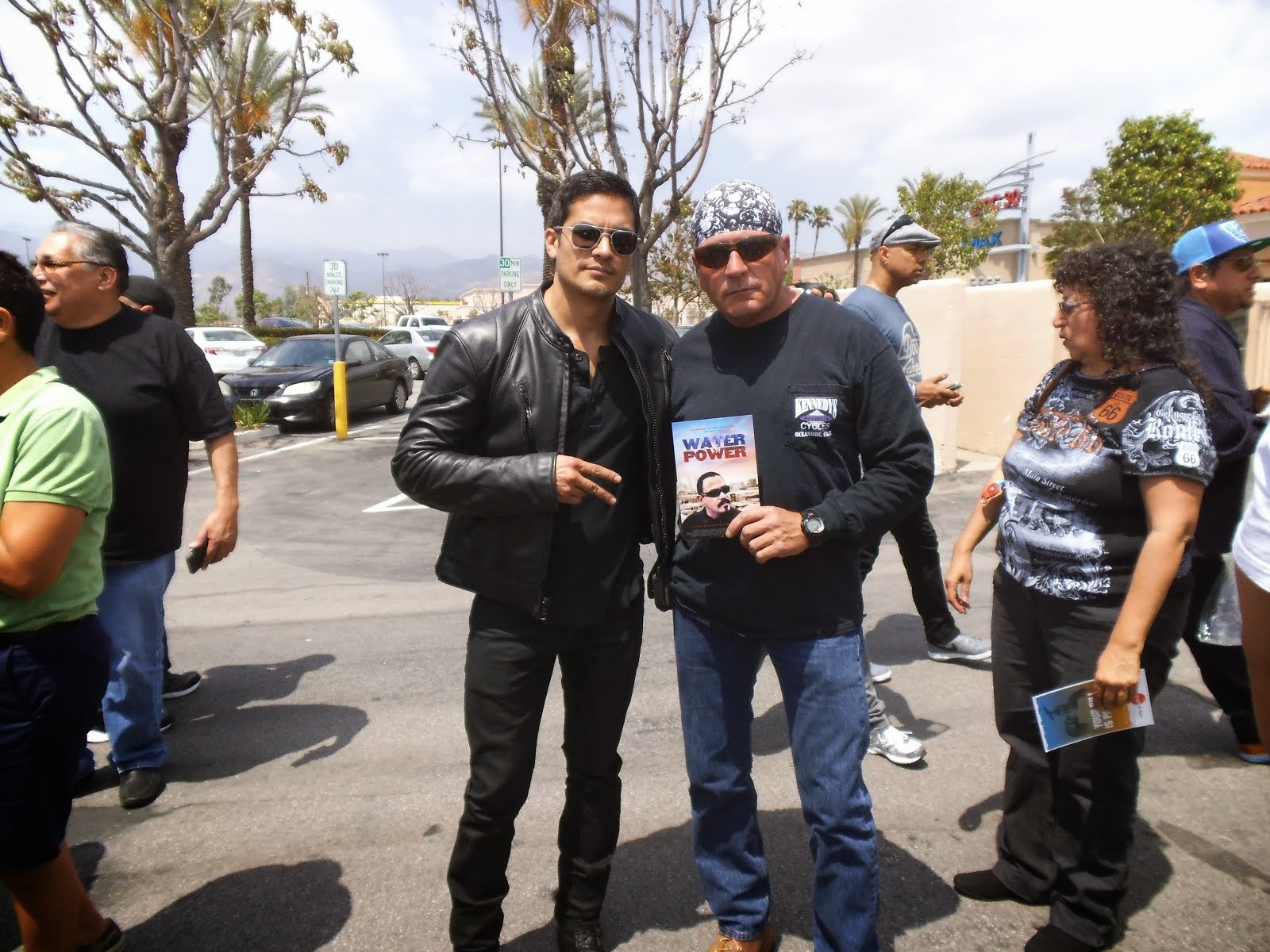OFF THE WIRE,AND A STRECTH
By Lincoln Anderson
Dana Beal is a Yippie — not a detective.
But he thinks he has a pretty good idea how 10 pounds of powerful C-4 plastic explosive wound up in the historic New York City Marble Cemetery.
For most of Monday, E. Second St. between First and Second Aves. was closed off by police after eight sticks of the military-grade explosive were found inside the leafy, landmarked graveyard, which was founded in 1831.
In a press conference at the scene, Police Commissioner Ray Kelly said there were no detonators found with the mysterious ordnance, saying it would have been hard to blow it up without them.
“We believe it’s been there for a significant period of time,” Kelly said of the C-4 cache. He added that the explosive material was the same type used in the London transit bombings in 2005.
The sticks were removed by a police explosives truck to the Rodman’s Neck firing range in the Bronx for examination.
According to The New York Times, a cemetery caretaker found the C-4 while planting a shrub in a foot of dirt in May or June of last year. The explosives were in a decaying black garbage bag. Unsure what the substance was, the caretaker reportedly placed the bag against a tree. On Sunday, while cleaning up after an Open House New York event — when the cemetery was open to the public — a volunteer came upon the explosives. The volunteer called police on Monday.
According to reports, police subsequently determined the C-4 sticks are more than 13 years old because the ordnance lacks special taggant chemicals required since 1997 to help identify the materials in bombs. Specifically, the explosives are reportedly M112 blocks, which were manufactured exclusively for the military.
The Times reported that police were investigating whether the Hells Angels — whose E. Third St. clubhouse is a block away from the site — are connected with the C-4 cemetery cache. But on Tuesday, Beal scoffed at that notion as implausible.
“Hells Angels are not the type of people who plant bombs,” he said. “They might have some guns — but they wouldn’t have bombs.”
When a reporter stopped by the Yippie Cafe and Museum, at 9 Bleecker St., Tuesday morning — following up on a phone call from Beal the previous day — it was coincidentally right after two police had just paid Beal a brief visit.
“I think they’re fishing,” Beal said.
The previous day, after news of the C-4 find broke, Beal had told two officers in a patrol car on the Bowery that he knew the real story.
“I told them, ‘I figured the whole thing out. If you want to talk, come over to the Yippie Museum,’ ” he said.
He said the police who showed up Tuesday claimed someone had called 911 from 9 Bleecker St., but he knew that wasn’t true since he’d been using the phone all morning. Beal said the police didn’t ask him anything, but wanted to check upstairs on the second floor. He told them they could talk to his lawyer, with whom he happened to be speaking to on the phone right then about another matter. The officers left abruptly.
“They wanted to look around,” Beal said. “I don’t want them to look around. Maybe they would find...a roach.”
Plus, he added, “The upstairs smells very strongly of cat, and I didn’t want to affront their olfactory organs. Some people would say, ‘Because you have unfixed cats they should be taken away.’
“All I got is too many cats — no bombs, not even an M-80.”
Beal said his hunch is basically that the C-4 explosives could be connected to David Degondea, who is currently in prison Upstate for killing a New York City police officer. Degondea, according to Beal, was a young “weapons dealer” who was dating Linda Twig, who lived in an E. Second St. tenement building whose rear wall happens to abut the Marble Cemetery.
Degondea, Beal said, was “a dangerous, violent young man.”
“I bet dollars to donuts that’s what some soldier from Desert Storm brought back — and sold to David Degondea,” Beal said of the C-4. The Persian Gulf War, a.k.a. Operation Desert Storm, lasted from late 1990 to early 1991.
According to the NYPD Angels Web site, which is devoted to officers slain in the line of duty, Detective Luis Lopez, 35 — from the Manhattan South Tactical Narcotics Team — was shot and killed by Degondea, then 23, during an undercover marijuana buy-and-bust operation on March 10, 1993. The shooting occurred outside a T-shirt store, the Screen Printing Co., at 114 E. First St.
According to NYPD Angels, Degondea had offered to sell Lopez, who was disguised as a drug dealer, four pounds of pot and an unspecified number of illegal guns for $10,000. Lopez left, saying he was going to get the money from his car. When Lopez and three other officers returned to arrest Degondea and two other suspects, Lopez was shot in the chest.
Beal, 63, is a leading Yippie, or member of the Youth International Party, the countercultural group formed in the 1960’s, known for its prankster activism. He’s also the organizer of the annual Global Marijuana March, as well as an advocate for ibogaine, a purported cure for heroin addiction.
Degondea and Twig weren’t Yippies, however, Beal said, but rather, considered themselves “junior mafia.” Degondea, he noted, didn’t arrive in the East Village until 1993. Twig, Beal said, smoked heroin twice a day and manufactured poker chips in her apartment. She also made her own GHB, a drinkable drug, which Beal said she had “squatters” peddle for her in local nightclubs. Twig died in 1997 of an overdose of a bad batch of her own GHB brew, Beal said.
Making the story more bizarre, Twig was friends with Henry Nuesslein, a.k.a. “Hank the Skank,” another non-Yippie and sometime caller to the Howard Stern radio show. A former telephone company worker and Nazi, Nuesslein was busted in 1995 for having a sizable weapons cache in his Brooklyn apartment, after his bathtub overflowed, drawing authorities’ attention.
According to a 1995 New York Law Journal article, police found grenades, a loaded AK-47 assault rifle, a Glock handgun and several cane swords in Nuesslein’s lair — as well as “five manuals on the chemistry and principles of explosive devices and homemade bombs.”
“The Skank” was paroled in 1999, and died last year.
To make a long story short, Beal’s theory is that after Degondea was arrested, Degondea had to stash his weapons cache somewhere. Nuesslein might have been given some of Degondea’s “arsenal,” but probably declined on the C-4, feeling it was too dangerous, Beal surmised; as a result, Twig likely used a ladder to get down into the locked cemetery, where she buried the C-4.
Beal walked over to the cemetery with a reporter early Tuesday afternoon, and pointed out the building and the basement-level apartment where Twig had once lived. Suit-wearing detectives were investigating inside the cemetery. A daily newspaper reporter was posted at the graveyard’s gate. Beal explained to her that he had solved the mystery of the C-4.
Interestingly, Beal noted, the detectives were focusing on the eastern end of the graveyard, near where Twig had lived. A detective entering the cemetery, when asked exactly where inside the burial ground the C-4 was found, just shook his head and declined to answer.
However, a photographer who was at the scene Monday said police were digging in “multiple locations” along the wall in the northeastern area of the cemetery — across from Twig’s former building.
“If they want to find out about the rest of the arsenal — including the pocket nuke,” Beal quipped, “they should make a deal with Degondea.”
Aron Kay, a.k.a. “The Yippie Pie Man,” said Beal’s hunch just might prove right.
“Anything is possible,” Kay said.
With reporting
by Jefferson Siegel
skip to main |
skip to sidebar




Bill & Annie

Art Hall & Rusty


NUFF SAID.......


































































OOHRAH

ONCE A MARINE,ALWAYS A MARINE

GIVING BACK


MOUNT SOLEDAD














BIKINI BIKE WASH AT SWEETWATER










FRIENDS





BILL,WILLIE G, PHILIP










GOOD FRIENDS


hanging out

brothers


GOOD FRIENDS

Good Friends

Hanging Out




Bill & Annie
Art Hall & Rusty
Art Hall & Rusty


NUFF SAID.......



















NUFF SAID......



























Mount Soledad




BALBOA NAVAL HOSPITAL
RUSTY DANNY

ANNIE KO PHILIP

PHILIP & ANNIE

OUT & ABOUT

OOHRAH...

OOHRAH
ONCE A MARINE,ALWAYS A MARINE

ONCE A MARINE,ALWAYS A MARINE
American Soldier Network GIVING BACK

GIVING BACK
CATHY & BILL
PHILIP & DANNY & BILL

MOUNT SOLEDAD
bills today
EMILIO & PHILIP
WATER & POWER
WATER & POWER
bootride2013



BIKINI BIKE WASH AT SWEETWATER







ILLUSION OPEN HOUSE

FRIENDS


GOOD FRIENDS



BILL,WILLIE G, PHILIP









GOOD FRIENDS

GOOD FRIENDS
Friends
- http://www.ehlinelaw.com/losangeles-motorcycleaccidentattorneys/
- Scotty westcoast-tbars.com
- Ashby C. Sorensen
- americansoldiernetwork.org
- blogtalkradio.com/hermis-live
- davidlabrava.com
- emiliorivera.com/
- http://kandymankustompaint.com
- http://pipelinept.com/
- http://womenmotorcyclist.com
- http://www.ehlinelaw.com
- https://ammo.com/
- SAN DIEGO CUSTOMS
- www.biggshd.com
- www.bighousecrew.net
- www.bikersinformationguide.com
- www.boltofca.org
- www.boltusa.org
- www.espinozasleather.com
- www.illusionmotorcycles.com
- www.kennedyscollateral.com
- www.kennedyscustomcycles.com
- www.listerinsurance.com
- www.sweetwaterharley.com

Hanging out

hanging out
Good Friends

brothers
GOOD FRIENDS

EMILIO & SCREWDRIVER

GOOD FRIENDS
Danny Trejo & Screwdriver

Good Friends
Navigation
Welcome to Bikers of America, Know Your Rights!
“THE BIKERS OF AMERICA, THE PHIL and BILL SHOW”,
A HARDCORE BIKER RIGHTS SHOW THAT HITS LIKE A BORED AND STROKED BIG TWIN!
ON LIVE TUESDAY'S & THURDAY'S AT 6 PM P.S.T.
9 PM E.S.T.
CATCH LIVE AND ARCHIVED SHOWS
FREE OF CHARGE AT...
BlogTalkRadio.com/BikersOfAmerica.
Two ways to listen on Tuesday & Thursday
1. Call in number - (347) 826-7753 ...
Listen live right from your phone!
2. Stream us live on your computer: http://www.blogtalkradio.com/bikersofamerica.
A HARDCORE BIKER RIGHTS SHOW THAT HITS LIKE A BORED AND STROKED BIG TWIN!
ON LIVE TUESDAY'S & THURDAY'S AT 6 PM P.S.T.
9 PM E.S.T.
CATCH LIVE AND ARCHIVED SHOWS
FREE OF CHARGE AT...
BlogTalkRadio.com/BikersOfAmerica.
Two ways to listen on Tuesday & Thursday
1. Call in number - (347) 826-7753 ...
Listen live right from your phone!
2. Stream us live on your computer: http://www.blogtalkradio.com/bikersofamerica.
Good Times
Hanging Out

Key Words
- about (3)
- contact (1)
- TENNESSEE AND THUNDER ON THE MOUNTAIN (1)
- thinking (1)
- upcoming shows (2)
Blog Archive
-
▼
2010
(4242)
-
▼
October
(447)
- Police continue to harass citizens who record them
- Two Notorious bikie gang members arrested after ba...
- Australia, Iron bar killer jailed for 11 years
- CHARLESTON, W.Va.Two former Pagans sentenced to pr...
- Mob turncoat is sentenced in NYC to time served
- WASHINGTON DC, Motorcycle Group Supports Military ...
- AUSTRALIA, Bikie gang threat can't be ignored
- Hells Angels to sue McQueen
- Johnston City, Ill. Deputies arrest Outlaws member...
- NEW YORK:Bikers in Halloween Costumes Terrorize Up...
- Hello San Diego Volunteers
- Richmond, Va.Jury to begin deliberations in Outlaw...
- Drug accusations fly in court
- Pagans case: School bus driver who helped discard ...
- A BIKER, brawl in the heart of Bondi has left one...
- Poker run benefits Hillsborough Vietnam memorial
- Outlaws gang trial to resume Friday
- Court documents: Santa Clara cop did favors for He...
- OMCG member charged over two shootings – Petersham
- Massachusetts, Settlement gives bikers refunds
- THE top two leaders of bikie gang Notorious will r...
- Two former Pagans sentenced to probation on drug-r...
- Can ATK Cruisers Help Harley-Davidson?
- It’s A Club! Not A Gang!
- November 4th - 7th 10th Annual Rocky Point Rally.
- What is Compromise?
- Barry & Carol Sandberg Murders,PRESS RELEASE
- Oregon,Charitable Biker Event Incites 'Criminal Pr...
- The Hells Angels motorcycle gang sues Alexander Mc...
- Outlaw Country,
- Quote!!!!!!!!!!!!
- VIRGINIA:Update: Outlaws gang trial to resume Friday
- TENNESSEE:Good Samaritan chases down suspected pur...
- RICHMOND, Va. Biker gang member disputes revenge s...
- PORTLAND, Maine, Outlaws motorcycle gang member p...
- Richmond, Va, No verdict yet in Va. biker gang trial
- Tennessee, Man chases two suspects in N. Knox pur...
- ARIZONA:This Week
- Hells Angels set for rumble on the catwalk
- CALIFORNIA:2011 Iron & Lace Custom Motorcycle Pinu...
- Outlaws Motorcycle Gang Member Pleads Guilty
- Stop Complying and Start Defying
- "INCITY TIMES" PUBLISHER IN MY CROSS HAIRS!!!!
- Boston Cop Pietroski, interesting case
- Texas, Bar owners say patrons were not involved in...
- Southern California Biker Information Guide Newsle...
- MEXICO CITY,Every cop in town quits after Mexico a...
- RICHMOND, Va. Biker Gang Trial Wrapping Up In Va.
- Biker gangmember disputes revenge story
- JACKSONVILLE,FLA, Armed Forces Bike Run set
- UPDATE: Defense rests in federal trial of Outlaws ...
- Insurance companies to reimburse overcharged motor...
- Guns! Prostitution! MURDER! This New Ron Klein Spo...
- ABATE web site & Volunteer for Candidates
- AMA:Election Day is Tuesday, Nov. 2 More Info
- I ended up with a list in two commercial breaks of...
- F.Y.I. GOOD READING
- Gang member testifies he was ordered to get even w...
- Informant at Va. biker trial talks of gang 'war'
- High-ranking Comanchero charged over two strike fo...
- Pratt, Kansas, Not your average outlaw biker gang
- Virginia, Bar-B-Q arsonist must pay $25,600
- Richmond, VA, Ex-biker gang member describes alleg...
- LOS ANGELES, CA, Hells Angels v SaksHells Angels ...
- Texas, Bandidos blamed in fight outside isle bar
- Virginia - Richmond, Gang members testify against ...
- How a nerve poison became "food"
- Hells Angels Sue Saks, McQueen Design, Over Trademark
- Australia, No gun found in bikie headquarters raid
- AZ: Police will use digital cameras mounted on the...
- House Rule, H.R 4646
- AG wants to ban drink that hospitalized CWU students
- Australia, Three men bailed over Centrefold Lounge...
- Australia, Another man arrested over Zervas shooting
- Australia, High-ranking Comanchero charged over tw...
- VENTURA, CA, Hells Angel president sentenced
- Virginia, Informant speaks of 'war' with rival gang
- Former Outlaws testify as trial continues
- Canada,Police tight-lipped over reported prison sc...
- Tinley Park biker lives on through the story of hi...
- Australia, Another man charged following investiga...
- Canada, Police tight-lipped over reported prison s...
- READERS SHARE: CHECK THIS OUT
- Trial underway of Milwaukee motorcycle gang leader
- WISCONSIN, Motorcyclists to rev up for Toys for To...
- MANSFIELD, OHIO, Richland County Health Department...
- OHIO: COUNTY HEALTH DEPARTMENT RECEIVES GRANT
- CA, San Jose audit raps cop-car commuting
- October 30, 2010 "RIDE" to Stop Violence Benefit P...
- Redding, CA, Police get grant for traffic safety
- California, Traffic enforcement focus of grant to ...
- More fuel for the fire? Article in the paper
- Wall Street Journal on Obama
- F.Y.I, CA: 7 classes offered for fall at college
- New Zealand, All quiet as bikers roll into town
- Australia, Bikies not all baddies, says magistrate
- F.Y.I. Check This Out, Know how to tell the differ...
- NHTSA and Motorcycle Only Checkpoints
- Robbery Ring Disguised as Drug Raids Nets Convicti...
- Australia, Biker`s wanted over strip club fight
-
▼
October
(447)
Bikers of America, Know Your Rights!... Brought to you by Phil and Bill
Philip, a.k.a Screwdriver, is a proud member of Bikers of Lesser Tolerance, and the Left Coast Rep
of B.A.D (Bikers Against Discrimination) along with Bill is a biker rights activist and also a B.A.D Rep, as well, owner of Kennedy's Custom Cycles
